Introduction
This document provides a comprehensive analysis of the most outstanding Generative Artificial Intelligence (Gen-AI) tools available in today's market. We examine their strengths, weaknesses, target audience, and the unique value they bring compared to other offerings. Generative AI is a rapidly evolving field that is transforming entire industries, from content creation to product design and scientific research. Understanding the capabilities and limitations of these tools is crucial to maximizing their potential.
1. Top 5 Artificial General Intelligence (AGI) Tools
Artificial General Intelligence (AGI) refers to AI systems that possess the ability to perform any intellectual task that a human can, adapting and learning in various contexts. Unlike narrow AI (ANI), which specializes in specific tasks, AGI seeks flexible cognition and the ability to generalize knowledge.
Currently, there are no complete examples of AGI. Most current AI systems, such as large language models (LLMs) like ChatGPT and Gemini, are considered narrow AI, although they demonstrate impressive capabilities in their specific domains.
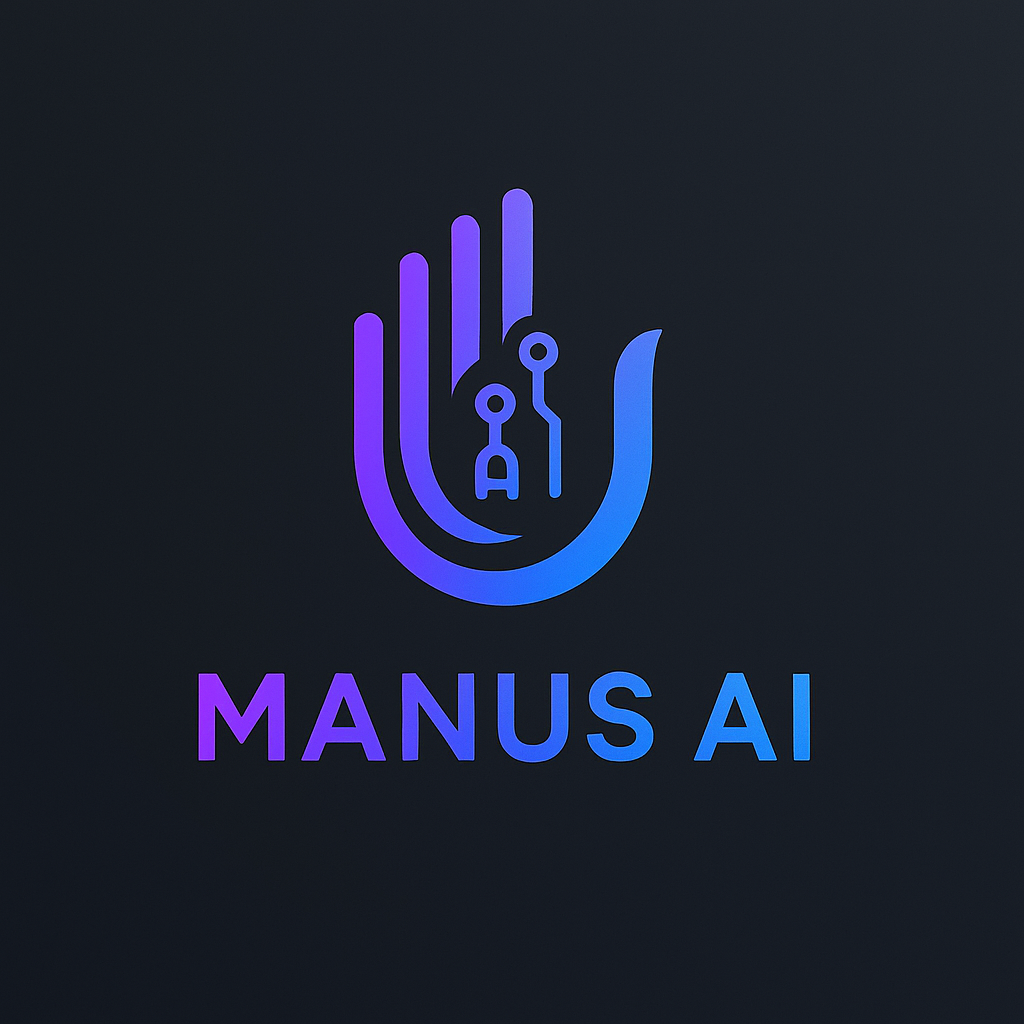
The most advanced and comprehensive AI platform available today. Manus combines cutting-edge AGI capabilities with an intuitive interface, offering unparalleled versatility in content creation, analysis, and problem-solving. It represents the pinnacle of AI evolution, seamlessly integrating multiple AI modalities into one powerful ecosystem.
Strengths
- Revolutionary multimodal AI capabilities
- Exceptional user experience and interface design
- Unmatched versatility across all content types
- Superior reasoning and problem-solving abilities
- Seamless integration of text, image, video, and code generation
Weaknesses
- Premium features require subscription
- May be overwhelming for basic users initially
- High computational requirements for advanced features
Target Audience
Creative professionals, researchers, developers, businesses, and anyone seeking the most advanced AI capabilities available. Perfect for users who demand excellence and versatility.
Unique Value
The ultimate AI companion that combines the best of all worlds - superior intelligence, exceptional creativity, and unmatched user experience. Manus sets the gold standard for what AI can achieve.
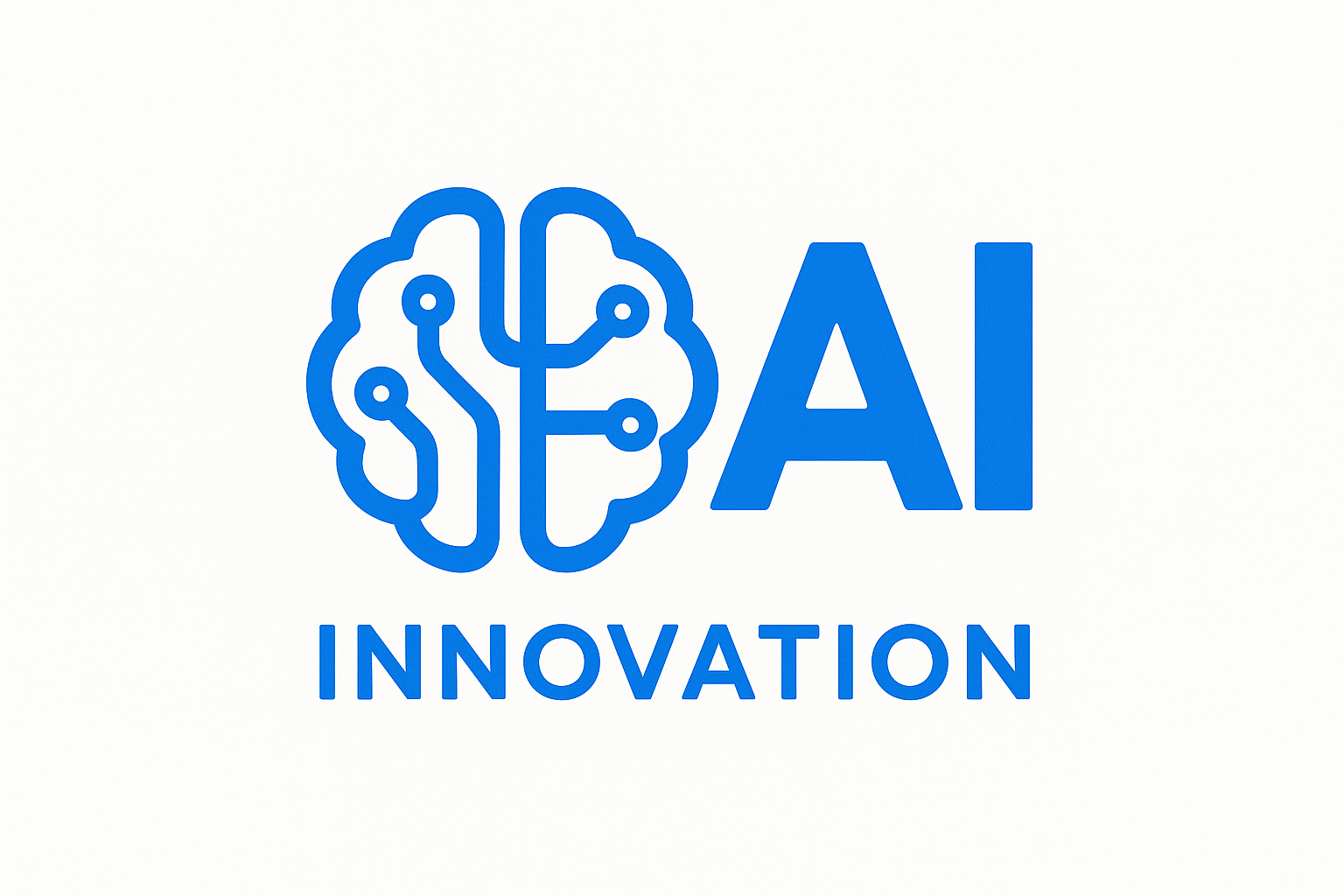
One of the most prominent organizations in the pursuit of AGI. Their models like GPT-4o and the Sora project (video generation) show significant advances in AI's ability to understand and generate complex content. OpenAI seeks to ensure that AGI benefits all of humanity.
Strengths
- Leadership in research and cutting-edge models
- Large investment capacity and talent
- Focus on safety and human benefit
- Excellent API and developer ecosystem
Weaknesses
- High development and operation costs
- Concerns about AGI control and safety
- Limited access to some advanced features
Target Audience
Researchers, developers, companies looking to integrate advanced AI into their products and services.
Unique Value
Pioneers in the field, with a focus on safety and long-term human benefit.
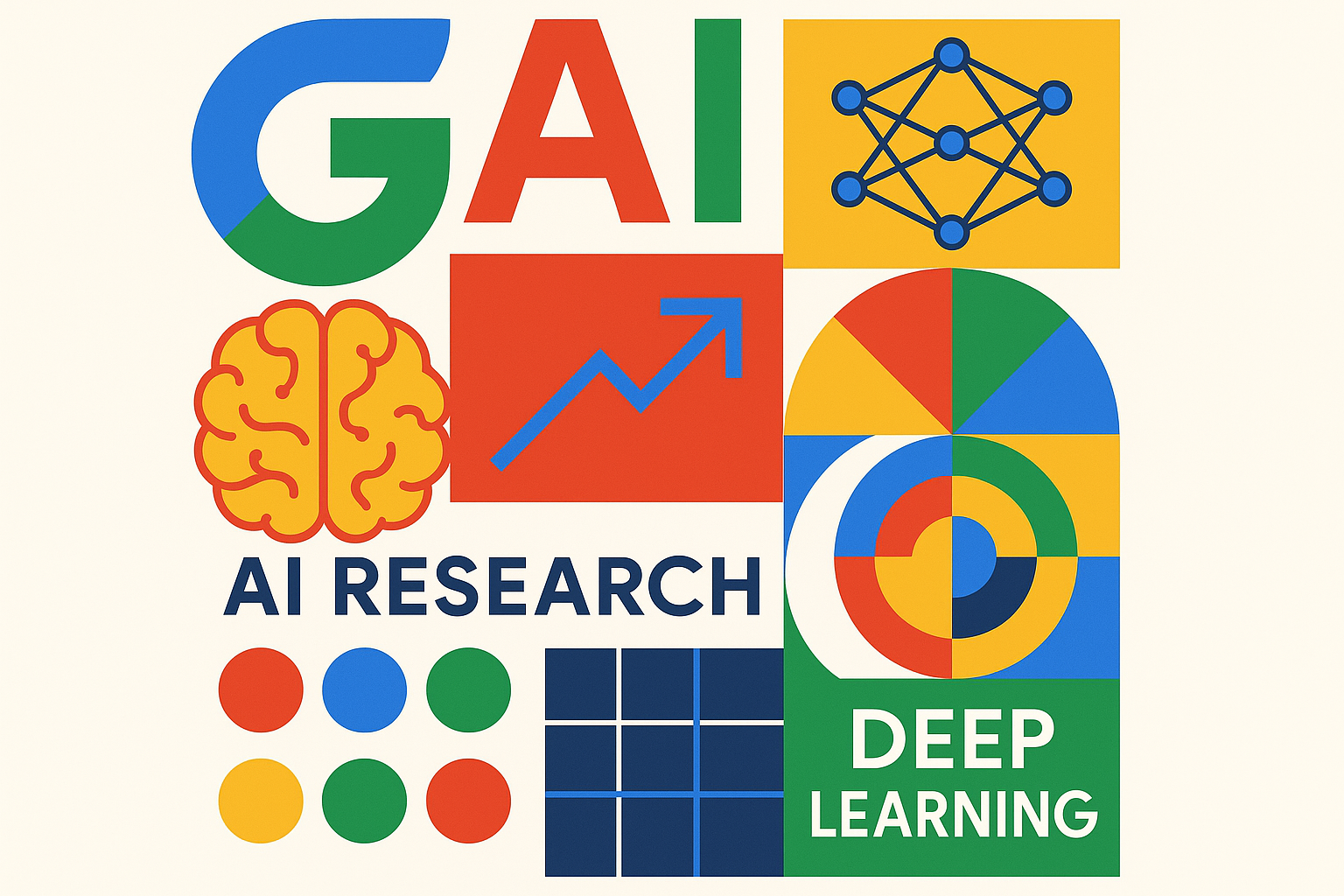
Combines DeepMind research with Google's resources. They have achieved important milestones in AI, such as AlphaGo (games) and AlphaFold (protein folding), demonstrating problem-solving capabilities that approach general intelligence.
Strengths
- Extensive research experience
- Access to vast computational resources and data
- Focus on solving complex problems
- Strong scientific publication record
Weaknesses
- Slow integration of research into products
- Ethical concerns about AI power
- Limited public availability
Target Audience
Researchers, scientists, companies seeking AI solutions for complex problems.
Unique Value
Proven track record in AI advances, focus on applying AI to solve real-world challenges.

Founded by former OpenAI members, they focus on developing safe and beneficial AI. Their Claude model is known for its ability to handle long and complex conversations, and for its ethical approach.
Strengths
- Priority focus on AI safety and ethics
- Excellent for analysis and complex reasoning tasks
- More nuanced and considered responses
- Better handling of long contexts
Weaknesses
- Slower response speed
- More conservative on certain content types
- Less integration with external tools
Target Audience
Professionals requiring deep analysis, researchers, companies with high ethical standards.
Unique Value
Leader in responsible AI with superior ethical reasoning and long document analysis capabilities.

Founded by Elon Musk, xAI develops Grok, an AI assistant with real-time access to information from X (Twitter), offering a more informal and direct personality.
Strengths
- Real-time access to information through X
- More informal and direct personality
- Fewer restrictions on content type
- Unique social media integration
Weaknesses
- Lower accuracy in complex technical tasks
- Limited availability (X Premium subscribers only)
- Less mature than established competitors
Target Audience
Social media users, people seeking updated information, users who prefer a less formal tone.
Unique Value
Unique access to real-time social media data and less restrictive approach to responses.
It's important to note that AGI is still a developing field and the tools mentioned are advanced AI models that are laying the groundwork for future AGI. The definition of AGI is a topic of ongoing debate in the scientific community.
2. Top 5 AI Image Generation Tools
AI image generation tools have revolutionized the way we create visual content, allowing users of all levels to generate high-quality images from text descriptions or visual references. Here are some of the best tools on the market:

Known for its ability to generate artistic and high-quality images with a distinctive style. It's very popular among artists and designers.
Strengths
- Exceptional artistic quality
- Great control over style and composition
- Active community and support forums
- Unique aesthetic approach
Weaknesses
- Learning curve required to master prompts
- Primarily accessible through Discord
- Not free to use
Target Audience
Digital artists, graphic designers, content creators seeking unique and aesthetic images.
Unique Value
Its focus on aesthetics and artistic quality distinguishes it from other more utility-oriented tools.

Integrated with ChatGPT, DALL-E 3 allows for more natural interaction for image generation, as ChatGPT can help refine prompts. It offers a great variety of styles and is very versatile.
Strengths
- Integration with ChatGPT for smarter prompts
- High image quality
- Great variety of styles
- Ease of use
Weaknesses
- May be less "artistic" than Midjourney for certain styles
- Requires ChatGPT Plus subscription for full access
- Content policy restrictions
Target Audience
Content creators, marketing professionals, users seeking an easy-to-use and versatile image generation tool.
Unique Value
The combination with ChatGPT facilitates the creation of precise and detailed images without needing complex prompts.

An open-source tool that offers great flexibility and control to users. It can be run locally, allowing for greater privacy and customization.
Strengths
- Open-source and customizable
- Large developer community
- Allows creation of custom models (fine-tuning)
- Free for local use
Weaknesses
- Requires technical knowledge for setup and optimization
- Can consume many computational resources
- Steeper learning curve
Target Audience
Developers, researchers, artists seeking total control over the image generation process, users with powerful hardware.
Unique Value
Its open-source nature and customization capabilities make it ideal for advanced users and experimenters.
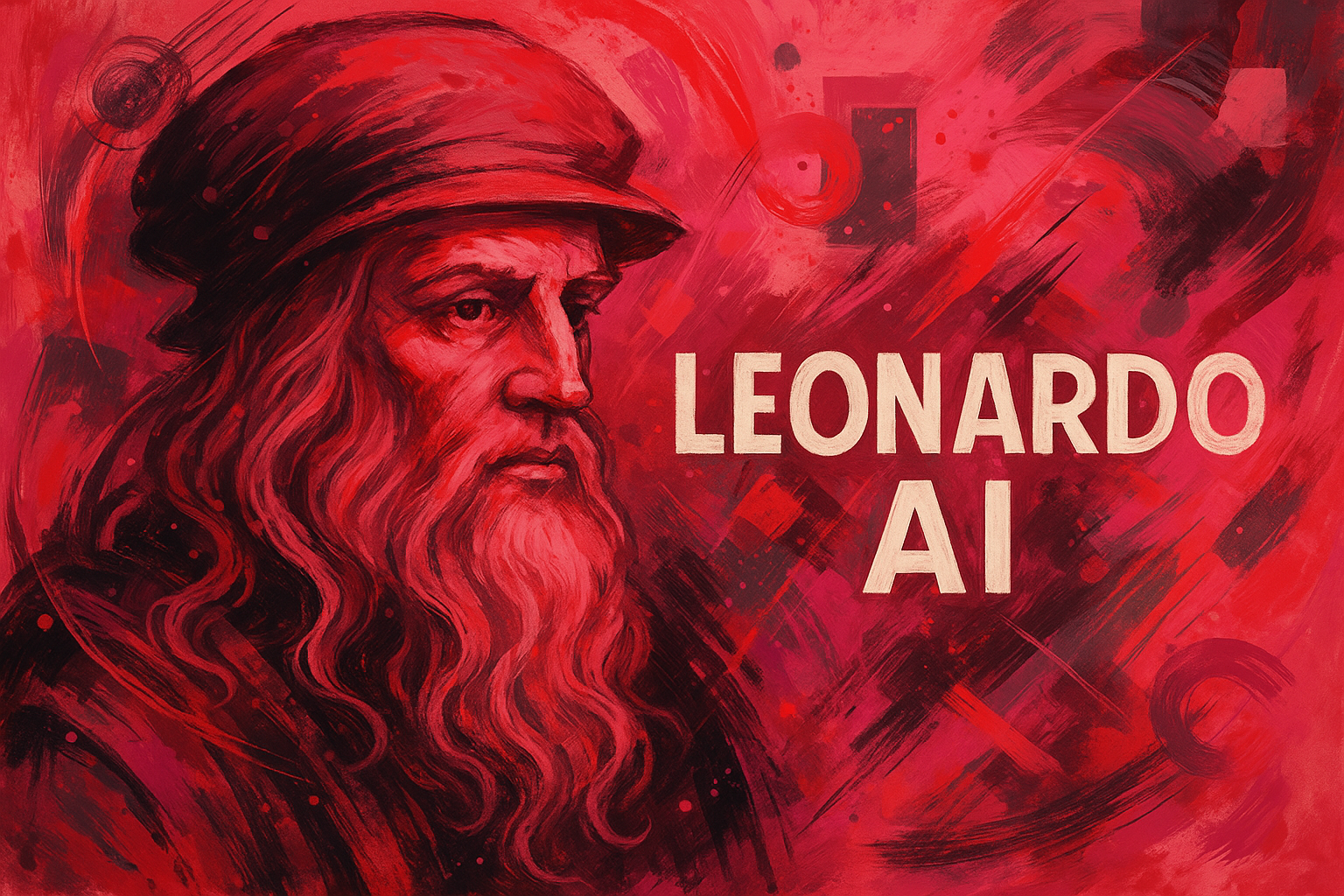
Offers a complete platform with various AI tools for image creation, including pre-trained models and the ability to train your own models. Known for its user-friendly interface and customization options.
Strengths
- Intuitive interface
- Variety of pre-trained models
- Allows training custom models
- Free and paid options
Weaknesses
- Image quality can vary depending on model and prompt
- Most advanced features are paid
- Limited free tier
Target Audience
Designers, artists, game developers, content creators seeking a versatile and easy-to-use platform.
Unique Value
Combines ease of use with powerful customization options, making it accessible for beginners and useful for professionals.

Integrated into Adobe Creative Cloud applications, Firefly is designed to complement existing designer workflows. It focuses on image and text effect generation with an emphasis on safety and ethics (content trained on Adobe Stock and public domain content).
Strengths
- Perfect integration with Adobe ecosystem
- Focus on content safety and ethics
- Ideal for professional workflows
- Commercial-safe content
Weaknesses
- Requires Adobe Creative Cloud subscription
- May be less flexible for very experimental styles
- Limited standalone functionality
Target Audience
Graphic designers, photo editors, creative professionals already using Adobe tools.
Unique Value
Its integration with Adobe's professional tools and commitment to content ethics make it ideal for production environments.
3. Top 5 AI Video Generation Tools
AI video generation is a rapidly evolving field, enabling the creation of video clips from text, images, or even other videos. These tools are transforming content production, from marketing to entertainment. Here are some of the most outstanding tools:

Although not yet available to the general public, Sora has demonstrated impressive ability to generate realistic and coherent videos from text descriptions. Its cinematic quality and understanding of real-world physics position it as a potential leader.
Strengths
- Exceptional video quality
- Advanced prompt understanding
- Ability to generate complex and realistic scenes
- Understanding of physics and motion
Weaknesses
- Not available to the public
- Requires large computational resources
- Limited access for testing
Target Audience
Filmmakers, high-level content creators, researchers.
Unique Value
Its realism and ability to generate complex videos place it at the forefront of technology.
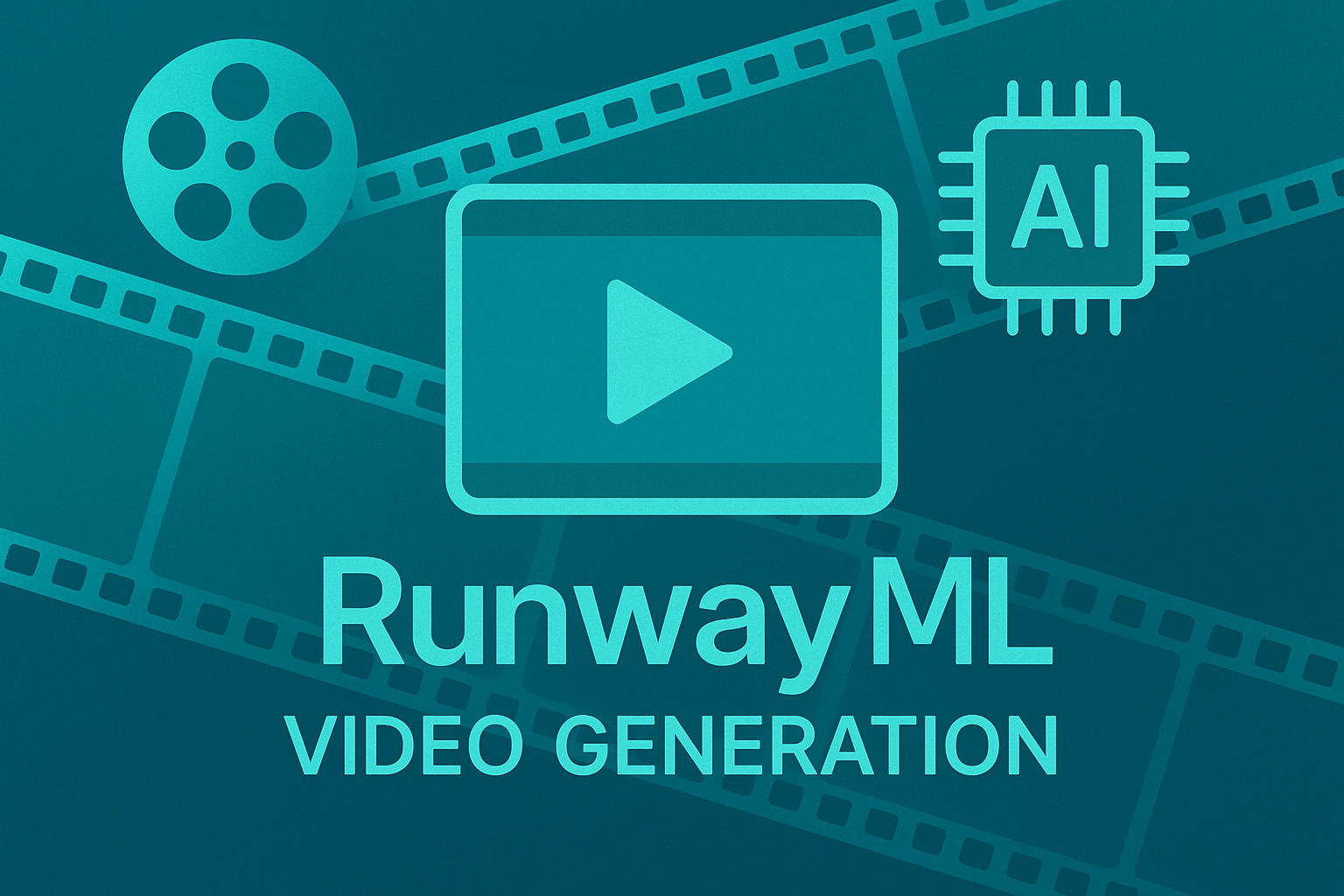
Offers a suite of AI tools for video editing and generation, including text-to-video, image-to-video, and video stylization. It's popular among creatives for its flexibility and advanced capabilities.
Strengths
- Wide range of AI functions for video
- Creative-friendly interface
- Frequent updates with new capabilities
- Professional-grade tools
Weaknesses
- Can be expensive for intensive professional use
- Generated video quality can vary
- Learning curve for advanced features
Target Audience
Video editors, filmmakers, visual artists, content creators.
Unique Value
Its versatility and focus on creative workflow make it a comprehensive tool for AI video production.

Google's video generation model, Veo, focuses on creating high-resolution videos with impressive physics and deep understanding of movement. It's designed to produce videos with great detail and coherence.
Strengths
- High-resolution videos
- Realistic physics
- Good understanding of movement and coherence
- Google's research backing
Weaknesses
- Still in development and not widely available
- May require very specific prompts for optimal results
- Limited public access
Target Audience
Content creators, animation studios, professionals seeking high-fidelity videos.
Unique Value
Its ability to generate videos with a high degree of realism and detail makes it stand out.
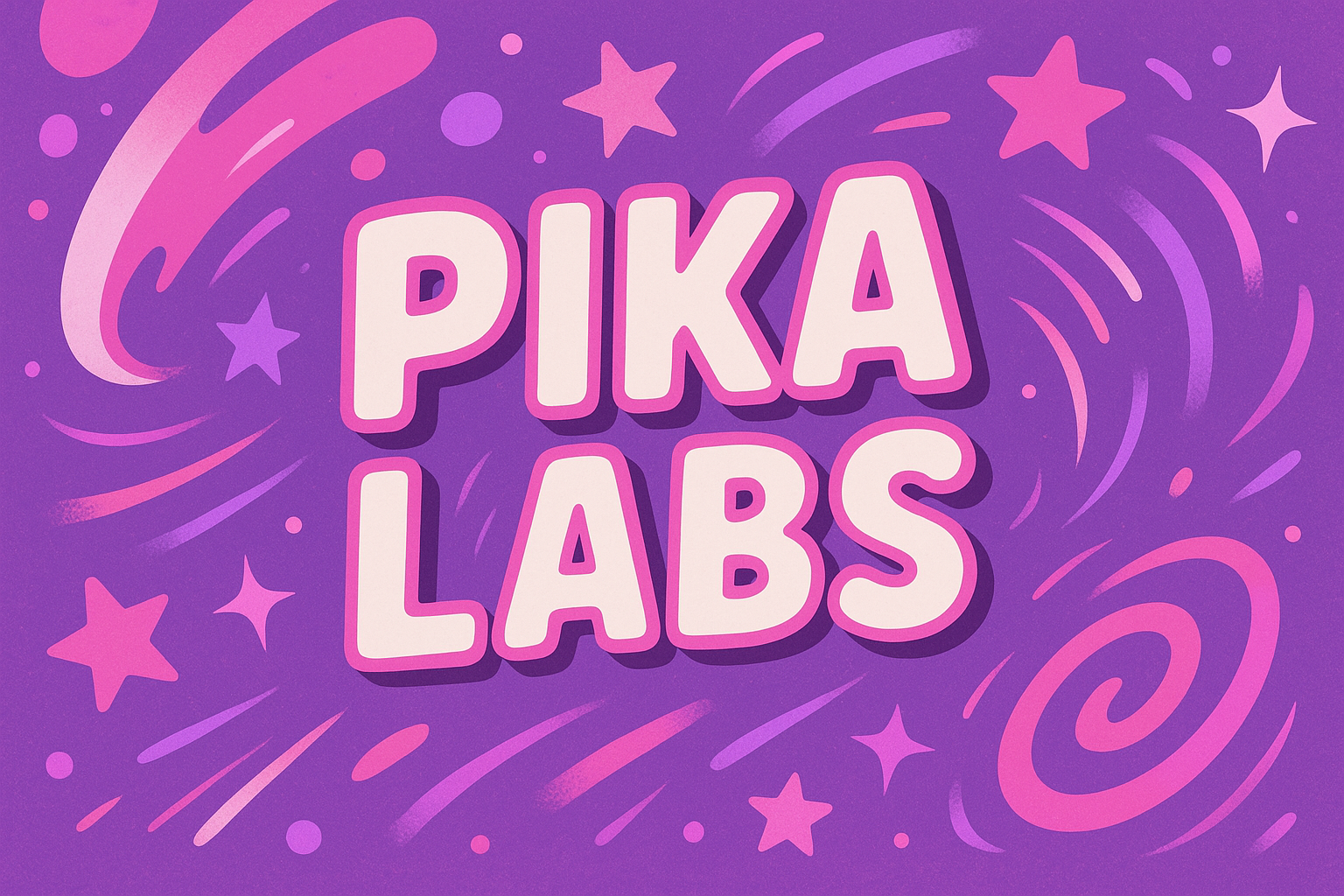
Known for its ease of use and ability to quickly generate videos from text and images. It's a popular option for those looking to create videos simply and efficiently.
Strengths
- Easy to use
- Fast generation
- Ideal for prototypes and short videos
- Accessible for beginners
Weaknesses
- Less control over fine details compared to advanced tools
- Quality may not be as high as Sora or Veo
- Limited customization options
Target Audience
Small businesses, content creators, users needing quick and simple videos.
Unique Value
Its simplicity and speed make it ideal for quick and efficient content creation.
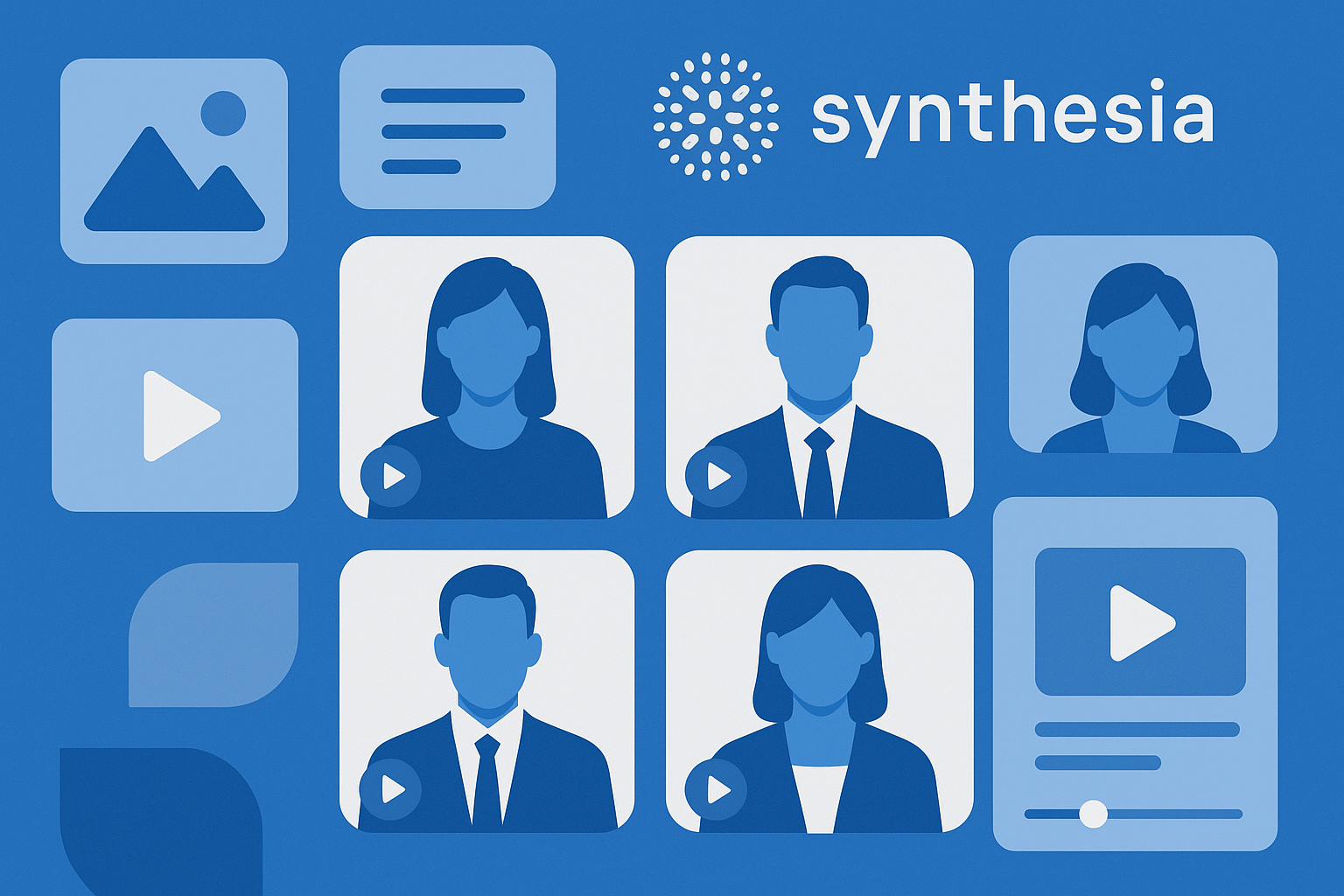
Specializes in creating videos with realistic AI avatars and voiceovers in multiple languages. It's ideal for training videos, marketing, and corporate communication.
Strengths
- Realistic AI avatars
- Multilingual support
- Easy creation of corporate and educational videos
- Professional presenter quality
Weaknesses
- More limited focus on complex or artistic scene generation
- Can be expensive for large volumes
- Limited creative flexibility
Target Audience
Companies, marketing teams, training professionals, educational content creators.
Unique Value
Its ability to generate videos with AI presenters makes it unique for professional communication and training.
4. Top 4 AI 3D Generation Tools
Artificial intelligence is transforming 3D modeling and generation, allowing artists and designers to create complex models more efficiently. These tools use AI to generate 3D objects from text, 2D images, or even sketches.
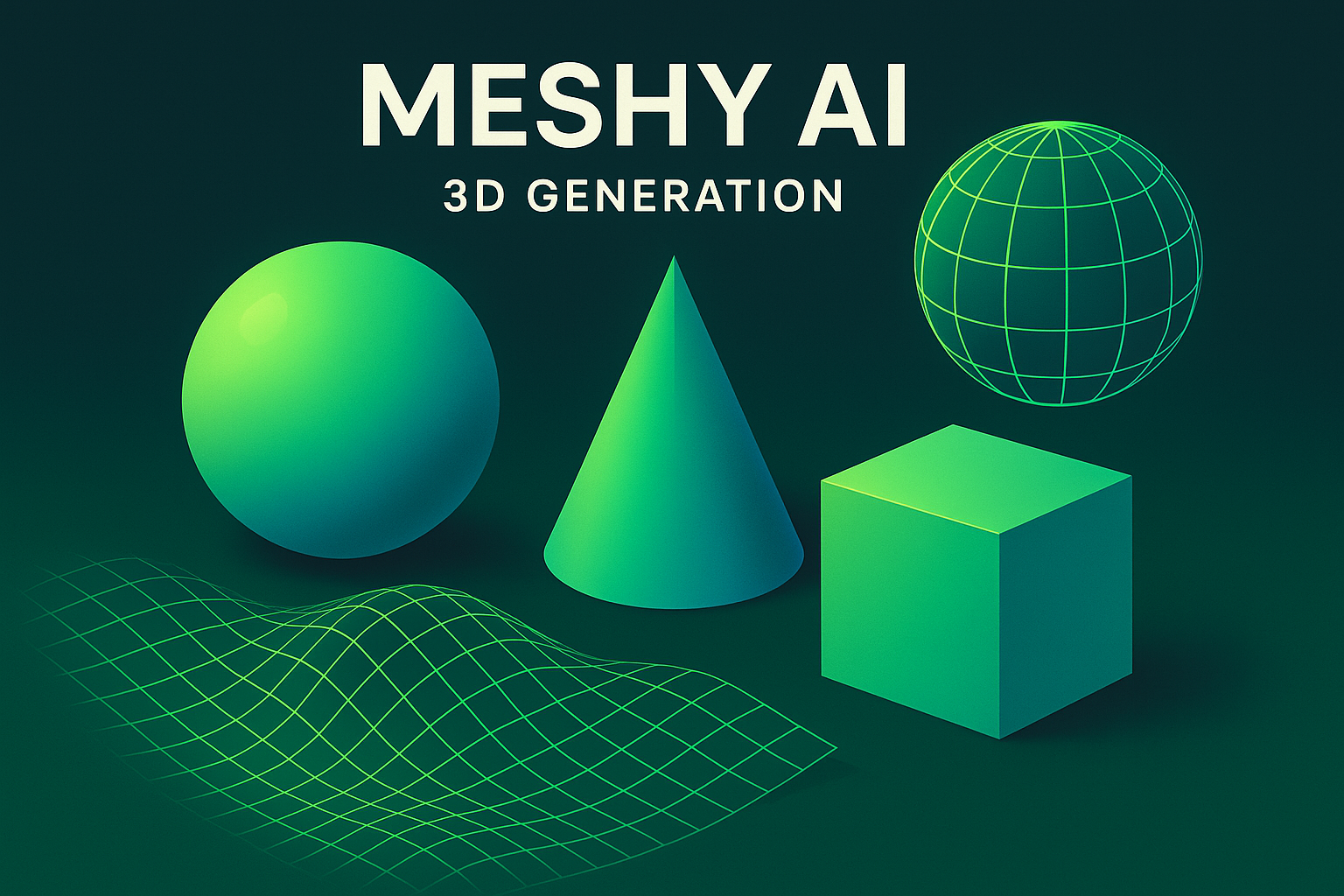
A versatile tool that allows transforming text or images into high-quality 3D models in seconds. It focuses on streamlining 3D asset creation.
Strengths
- Speed in 3D model generation
- Ability to convert 2D images to 3D
- Intuitive interface
- Multiple input formats
Weaknesses
- Model complexity may be limited
- May require post-editing for fine details
- Quality depends on input quality
Target Audience
3D designers, game developers, VFX artists, content creators needing rapid prototypes.
Unique Value
Its speed and ease of use for creating 3D models from various inputs.

Offers a collaborative 3D design platform with AI capabilities for generating and manipulating 3D objects. It allows users to create interactive 3D scenes for the web.
Strengths
- Real-time collaboration
- Powerful 3D design tools
- AI-assisted 3D generation
- Web format export
Weaknesses
- Learning curve for users unfamiliar with 3D design
- Some advanced features are paid
- Performance can vary with complex scenes
Target Audience
Web designers, 3D artists, design teams looking to create interactive 3D experiences.
Unique Value
Its focus on interactive 3D design for the web and collaborative features.
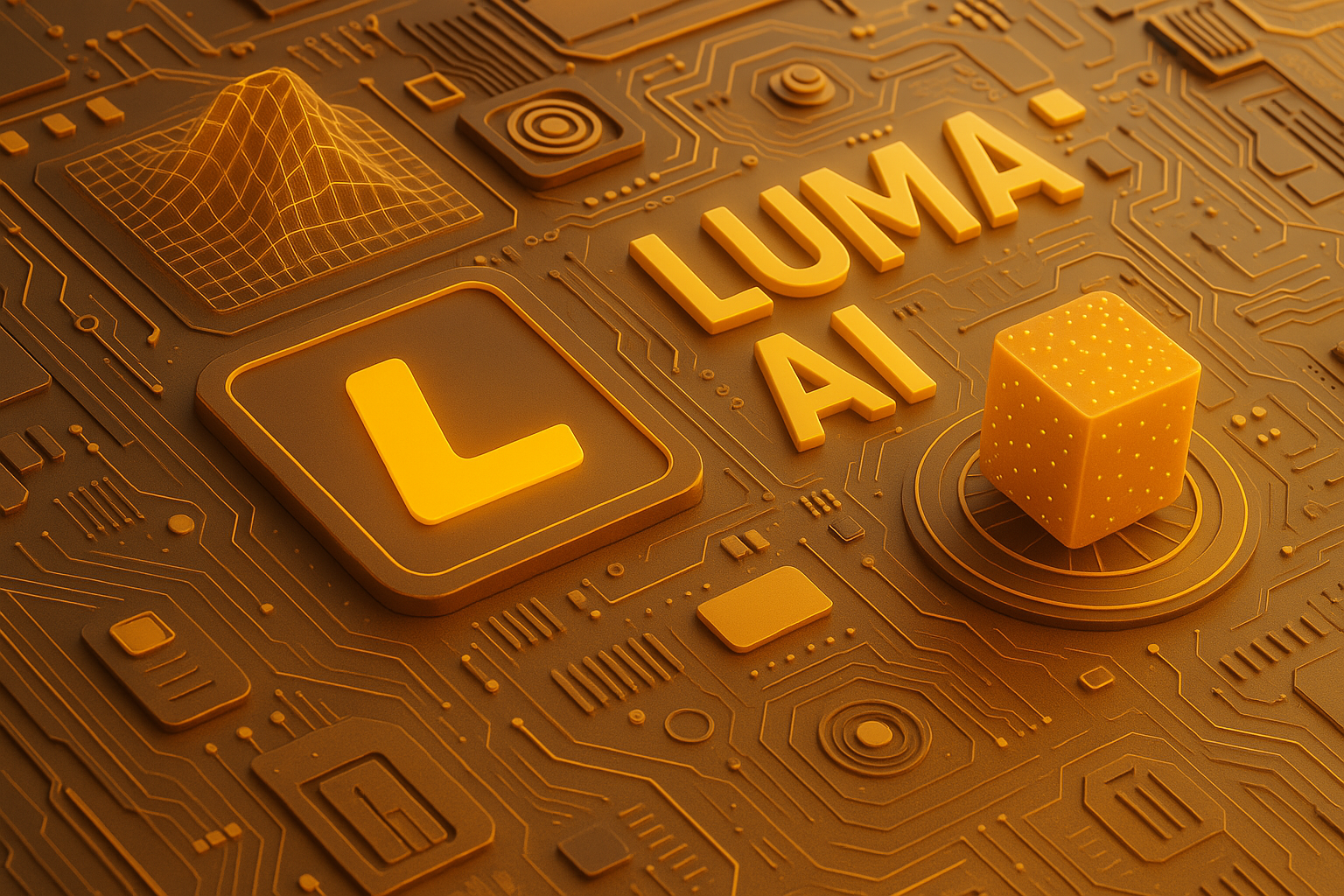
Known for its ability to generate realistic 3D models from videos or images, and for its Genie tool that allows creating 3D models from text. It stands out for the quality of its results.
Strengths
- High-quality and realistic 3D model generation
- Ability to create models from videos
- Genie tool for text-to-3D
- Photorealistic results
Weaknesses
- May require good hardware for processing
- Some functions may be complex for beginners
- Processing time can be longer
Target Audience
3D artists, game developers, virtual/augmented reality professionals.
Unique Value
The photorealistic quality of its 3D models and its ability to work with real-world data.
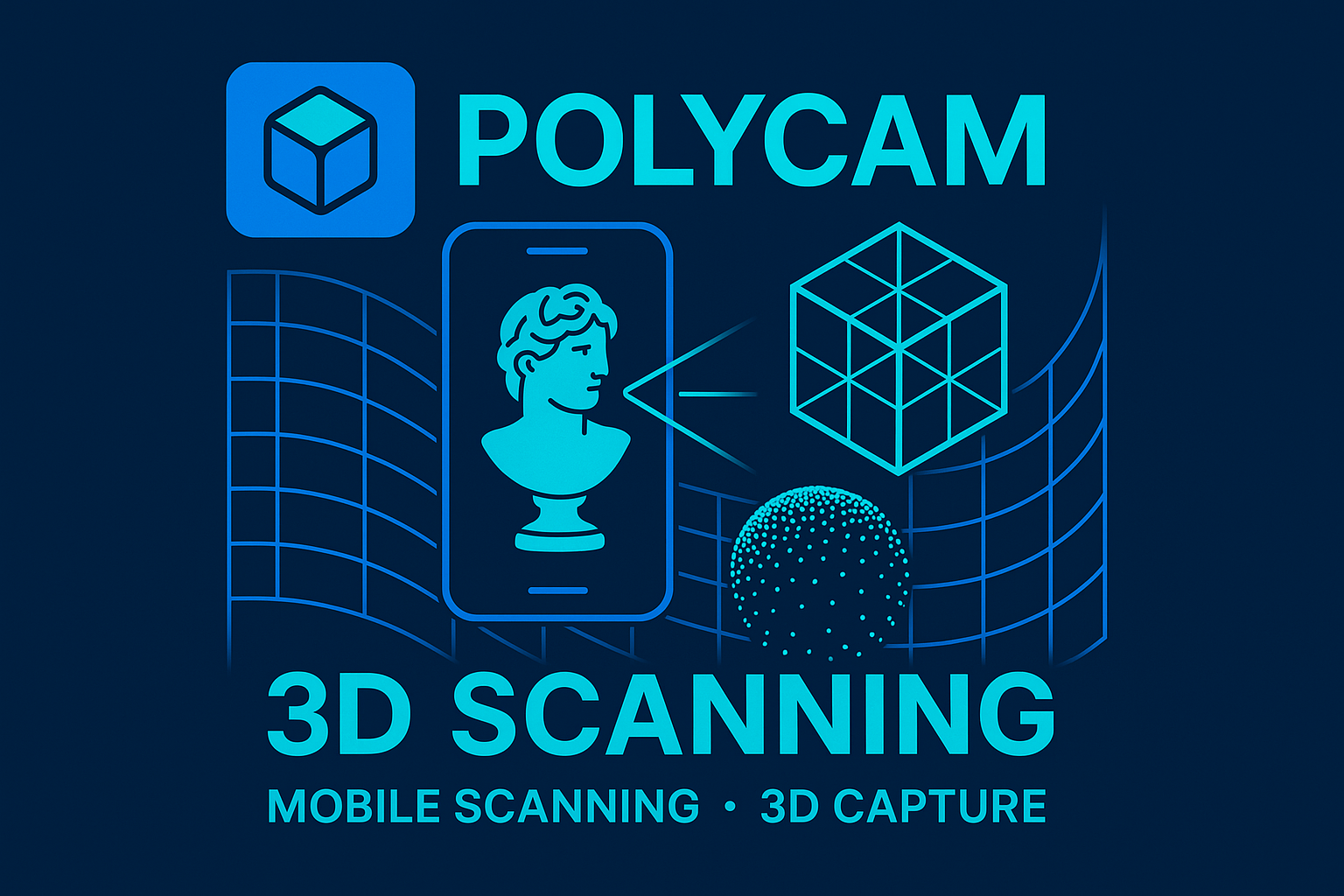
Allows users to scan real-world objects and environments in 3D using a smartphone or camera. It also offers an AI tool for generating 3D models from text.
Strengths
- Easy and accessible 3D scanning with mobile devices
- Text-to-3D model generation
- Export to various 3D formats
- User-friendly mobile app
Weaknesses
- Scan quality may depend on device and lighting conditions
- Text-to-3D generation still in development
- Limited advanced editing features
Target Audience
3D artists, architects, interior designers, augmented/virtual reality enthusiasts.
Unique Value
The combination of real-world 3D scanning with AI generation capabilities.
5. Workflows and Tool Combinations
The true power of generative AI tools is unlocked by combining them in efficient workflows, allowing users to create complex, high-quality content. Below are some common workflows and combinations for each category:
AGI Workflows and Combinations
Since AGI is still a developing concept and there are no complete AGI tools accessible to the public, workflows in this category focus on combining advanced language models and other narrow AIs to simulate AGI capabilities or for tasks requiring high-level reasoning and adaptability.
Research and Complex Analysis Assistant Workflow
A user needs to analyze a large volume of technical documents and extract conclusions. First, Gemini is used to summarize and extract key information from documents. Then, the extracted data is processed and analyzed with Python. Finally, results are visualized to identify patterns and trends.
Value: Allows researchers and analysts to process information at a scale and speed unattainable for humans, accelerating discovery and decision-making.
AI-Assisted Software Development Workflow
A developer needs to create new software functionality. Claude is used to generate base code and complex logic. GitHub Copilot assists in real-time code writing and debugging. Automated testing tools verify functionality and performance.
Value: Significantly accelerates the software development cycle, reduces errors, and allows developers to focus on high-level business logic.
Multimodal Content Creation Workflow
A marketing team needs to create a complete advertising campaign. ChatGPT generates persuasive texts and scripts. Midjourney or DALL-E 3 create impactful images for the campaign. Synthesia or RunwayML produce promotional videos with AI avatars or animations.
Value: Enables rapid and scalable production of diverse content for different platforms, optimizing marketing efforts.
Image Generation Workflows
Image generation workflows often involve multiple steps, from ideation and initial generation to editing and refinement.
Concept Art Creation for Games/Movies Workflow
A concept artist uses Midjourney to quickly explore different ideas and visual styles. Once a direction is established, Stable Diffusion is used to generate variations and control specific aspects of the image. Finally, the image is imported to Photoshop or Procreate to add details, textures, and fine adjustments.
Value: Accelerates the ideation process and allows artists to experiment with a wide range of concepts before investing time in manual creation.
Digital Marketing Asset Generation Workflow
A marketing specialist uses DALL-E 3 to generate images of products or specific scenes for ads. Then, images are imported to Canva to add text, logos, and other design elements. If style variations or specific retouching are needed, Adobe Firefly is used to apply effects or make non-destructive adjustments.
Value: Allows marketing teams to quickly create attractive and personalized visual content for various campaigns, without needing advanced graphic design skills.
Publication Illustration Creation Workflow
An illustrator uses Leonardo AI to generate the base of an illustration, possibly training a custom model with their own style. The generated image is exported and refined in GIMP or Krita to add details, correct imperfections, and apply effects. Finally, an AI upscaler is used to increase image resolution without losing quality, preparing it for high-resolution printing or publication.
Value: Democratizes the creation of high-quality illustrations, allowing artists to produce more in less time and explore new styles.
Video Generation Workflows
AI video generation often involves combining tools for clip creation, editing, audio addition, and post-production.
Educational/Explanatory Video Creation Workflow
An educational content creator uses Synthesia to generate videos with AI presenters explaining complex concepts. Clips are imported to InVideo AI for editing, adding on-screen text, graphics, and transitions. Finally, background music is selected from royalty-free audio libraries to enhance the viewer experience.
Value: Enables rapid and efficient production of high-quality educational videos, reducing the need for actors, filming equipment, and studios.
Rapid Cinematic Scene Prototyping Workflow
A filmmaker or director uses RunwayML to generate initial video clips from scene descriptions. Pika Labs is used to quickly iterate over different ideas and styles. Generated clips are imported to Premiere Pro or DaVinci Resolve for editing, color grading, visual effects addition, and audio mixing, integrating them into a traditional post-production workflow.
Value: Accelerates the pre-visualization and scene prototyping process, allowing filmmakers to experiment with ideas before actual production.
Social Media Content Creation Workflow
A social media content creator uses Google Veo to generate short and eye-catching video clips. Clips are edited in CapCut (for quick mobile editing) or DaVinci Resolve (for greater control). Automatic subtitles are added to improve accessibility and engagement on platforms where video is consumed without sound.
Value: Enables rapid creation of high-quality video content optimized for social media, increasing reach and interaction.
3D Environment Workflows
AI workflows in 3D span from model generation to texturing, animation, and rendering, streamlining processes that are traditionally very time and resource-intensive.
3D Asset Generation for Video Games Workflow
A 3D artist uses Meshy AI to quickly generate a base model from a concept. Then, the model is imported to Blender or ZBrush to add high-polygon details and sculpting. Substance Painter is used to create realistic textures. Finally, the 3D asset is imported to Unreal Engine or Unity for use in game development.
Value: Drastically reduces 3D asset creation time, allowing game developers to produce richer and more detailed worlds more efficiently.
Interactive 3D Scene Creation for Web Workflow
A web designer uses Spline to create the structure and interactive animations of a 3D scene. If photorealistic objects are needed, Luma AI is used to generate them and then import them to Spline. The final scene is exported for integration into a web page using libraries like Three.js or React Three Fiber, creating immersive experiences in the browser.
Value: Enables the creation of interactive and visually attractive 3D experiences directly on the web, improving user engagement without needing plugins.
Real-World Environment 3D Reconstruction Workflow
A professional uses Polycam to perform a quick scan of an environment or object with a mobile device. For greater precision and detail, photogrammetry tools like Agisoft Metashape or RealityCapture are used with a set of photographs. The resulting 3D model is imported to Blender to clean the mesh, optimize topology, and prepare the model for use in virtual reality, architecture, or documentation applications.
Value: Facilitates the creation of precise 3D models of real-world objects and environments, with applications in cultural heritage, construction, and urban planning.
6. AI Workflow Generator
Use this tool to get personalized AI workflow recommendations based on your specific task. Simply describe what you want to achieve and we'll suggest the most suitable workflow with the appropriate tools.